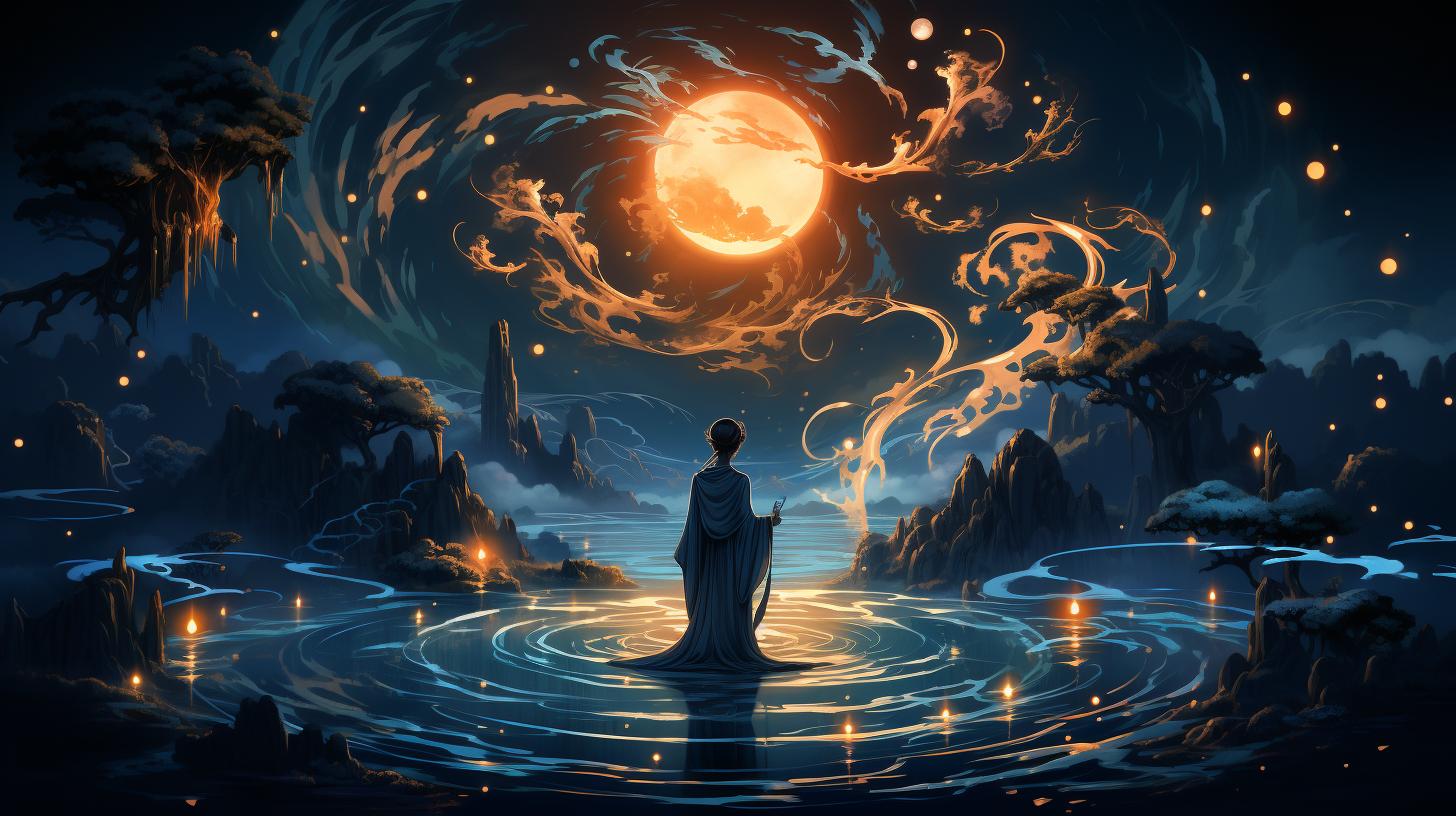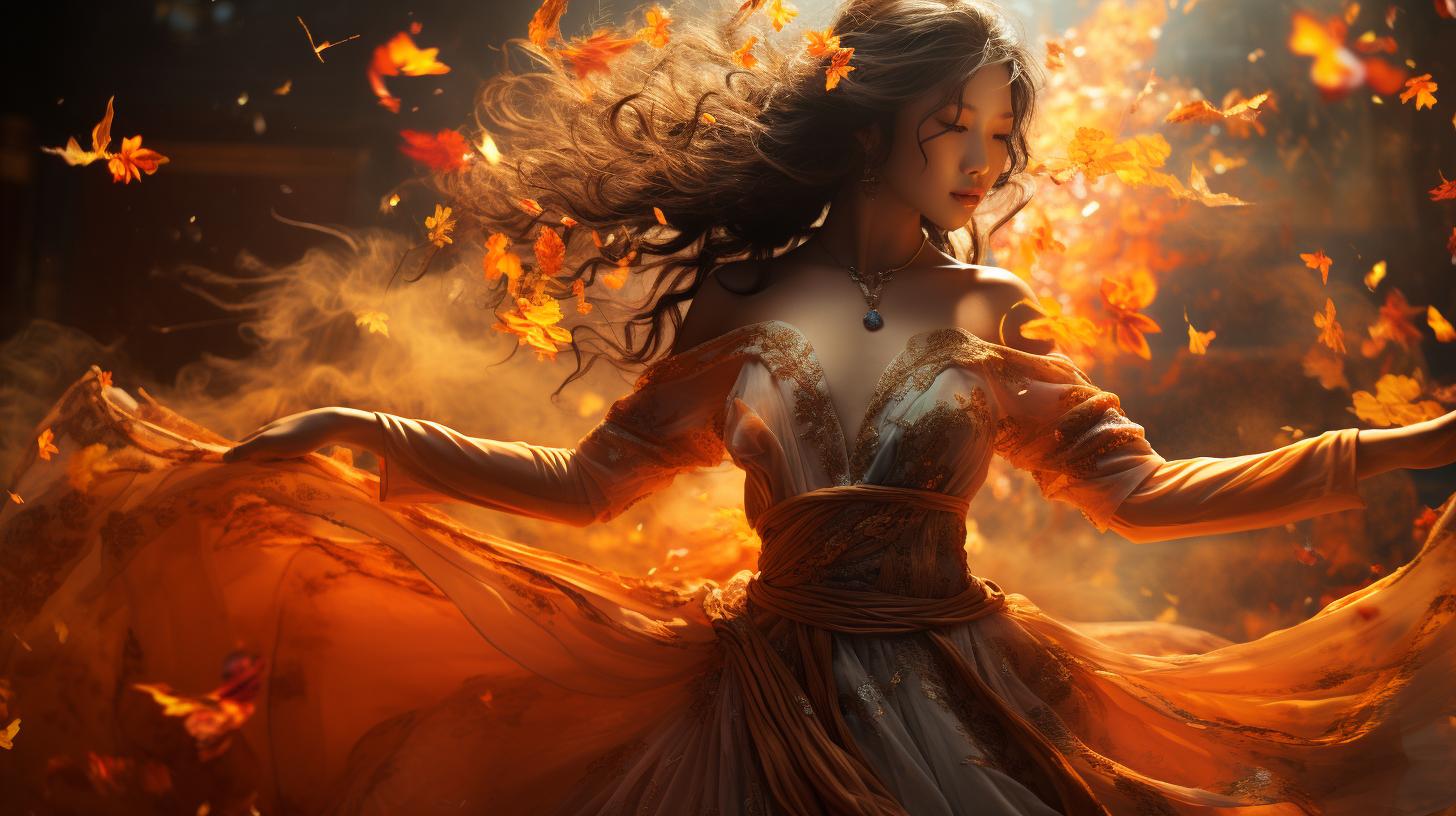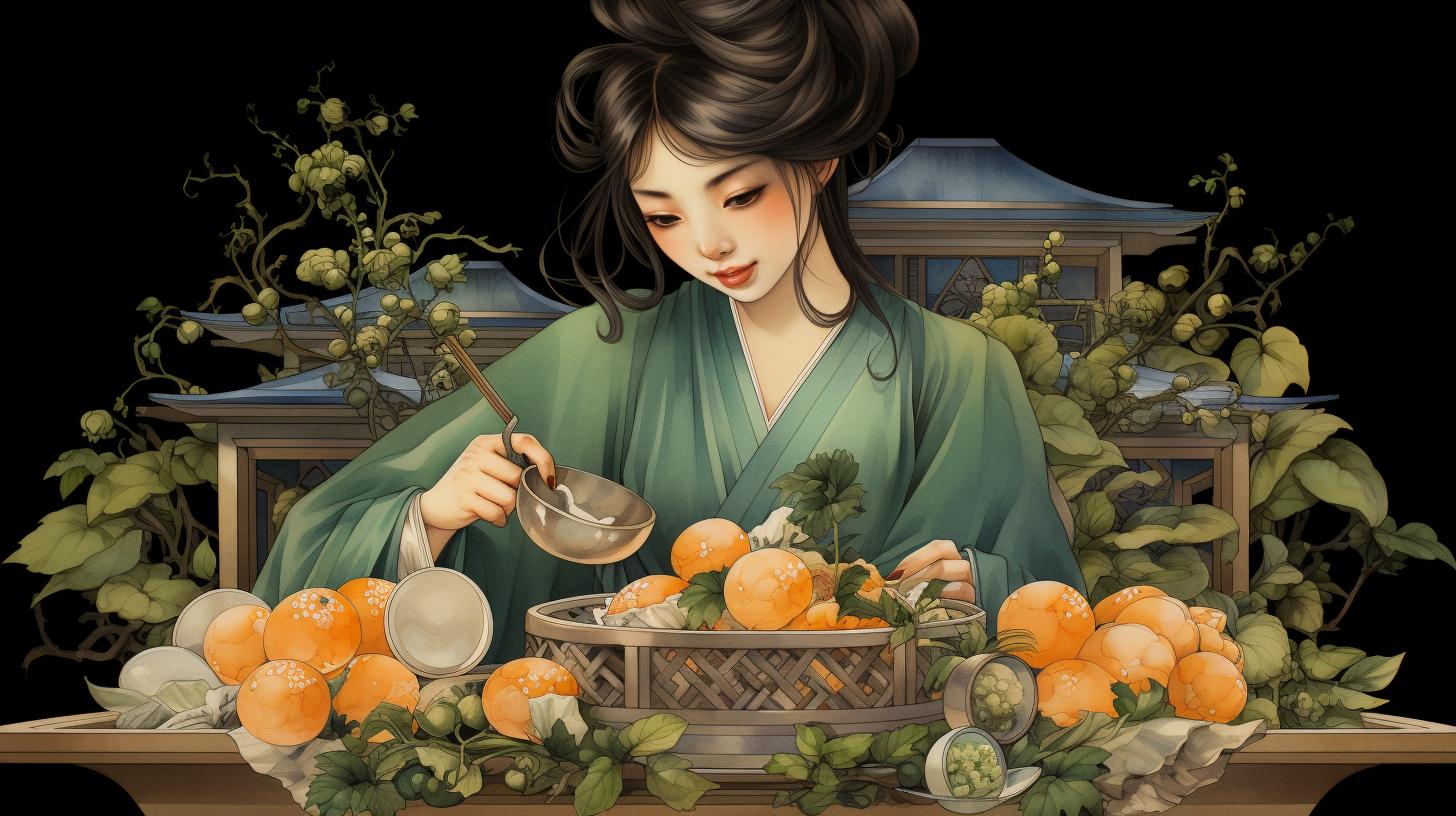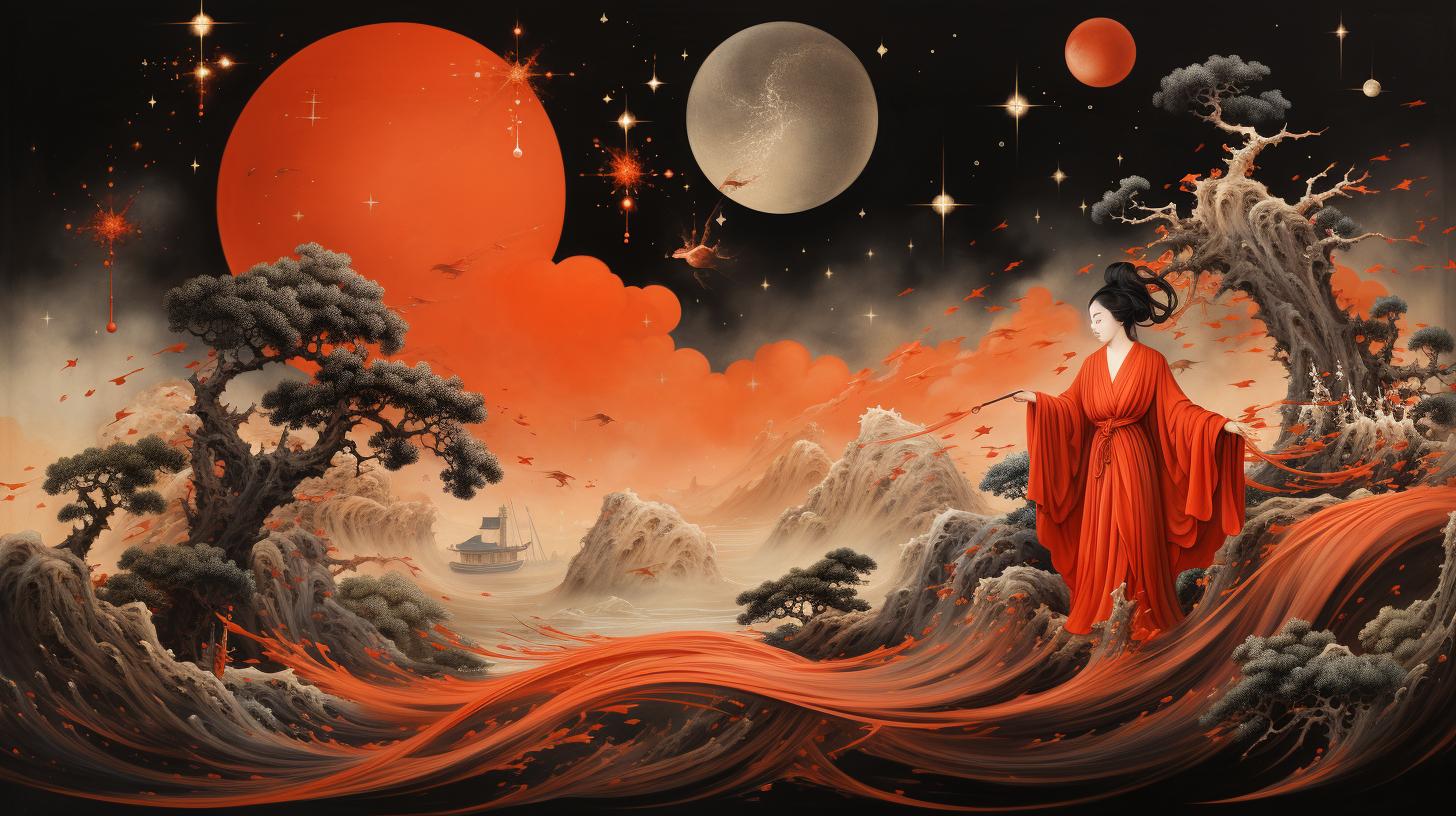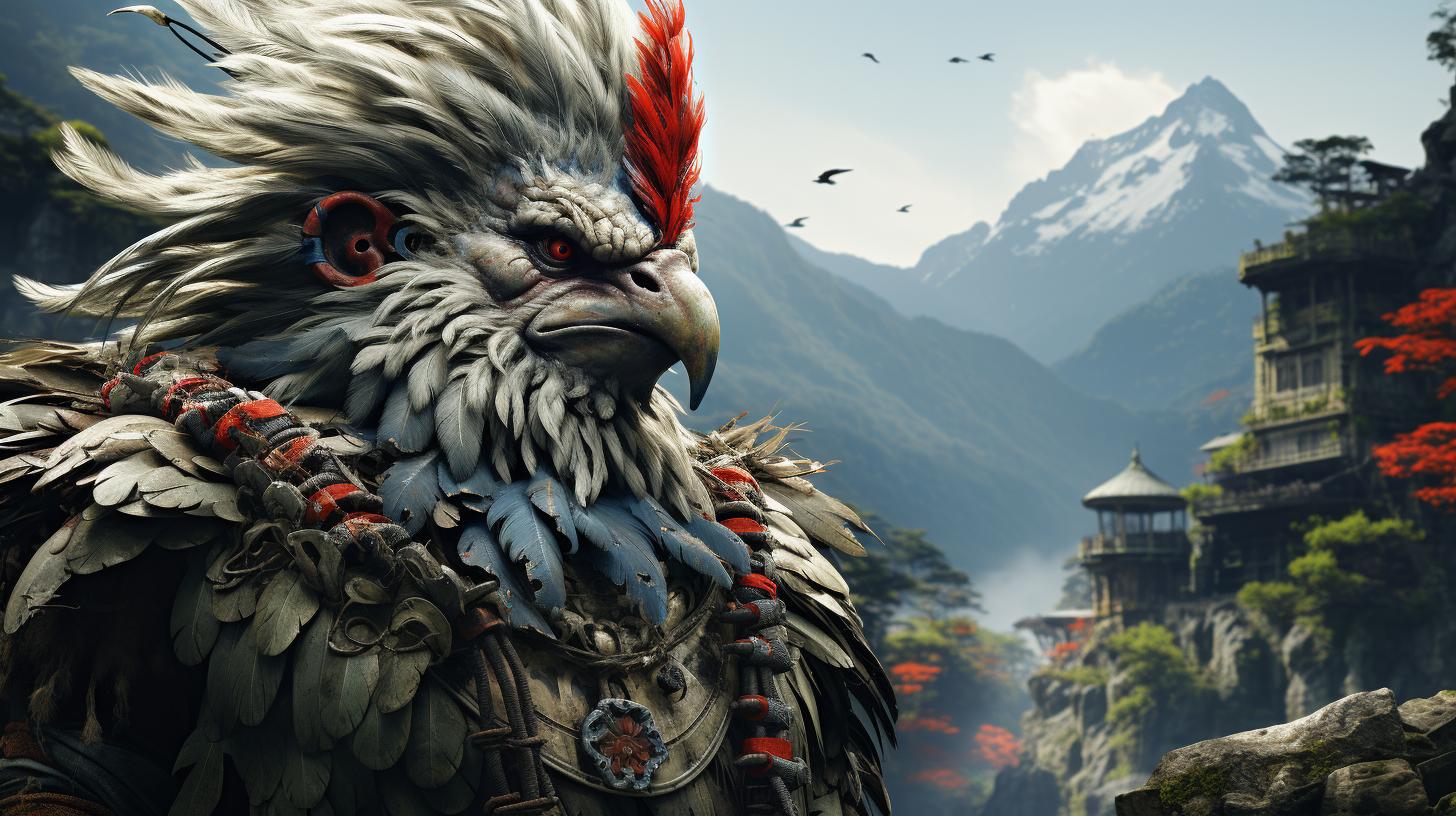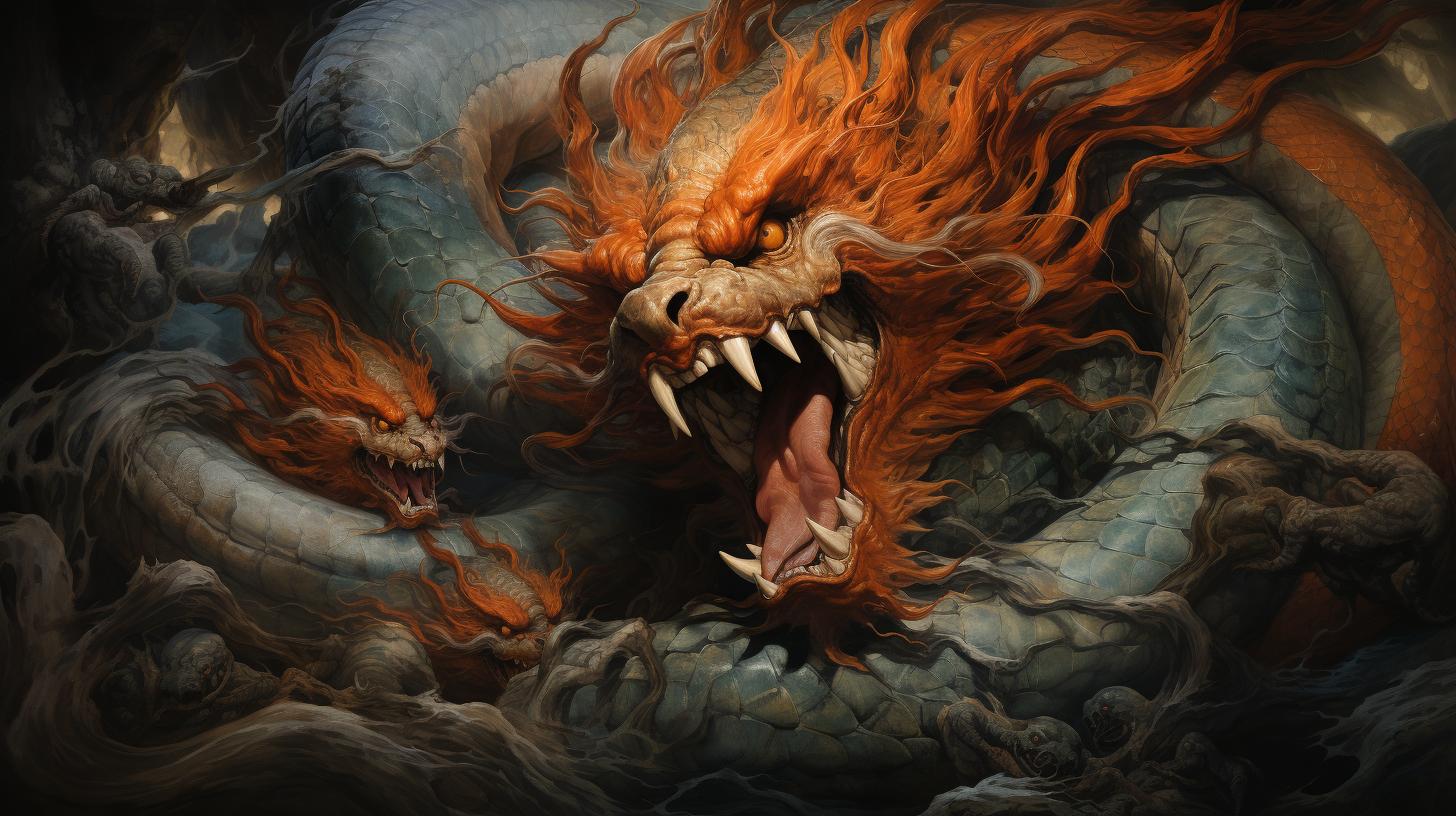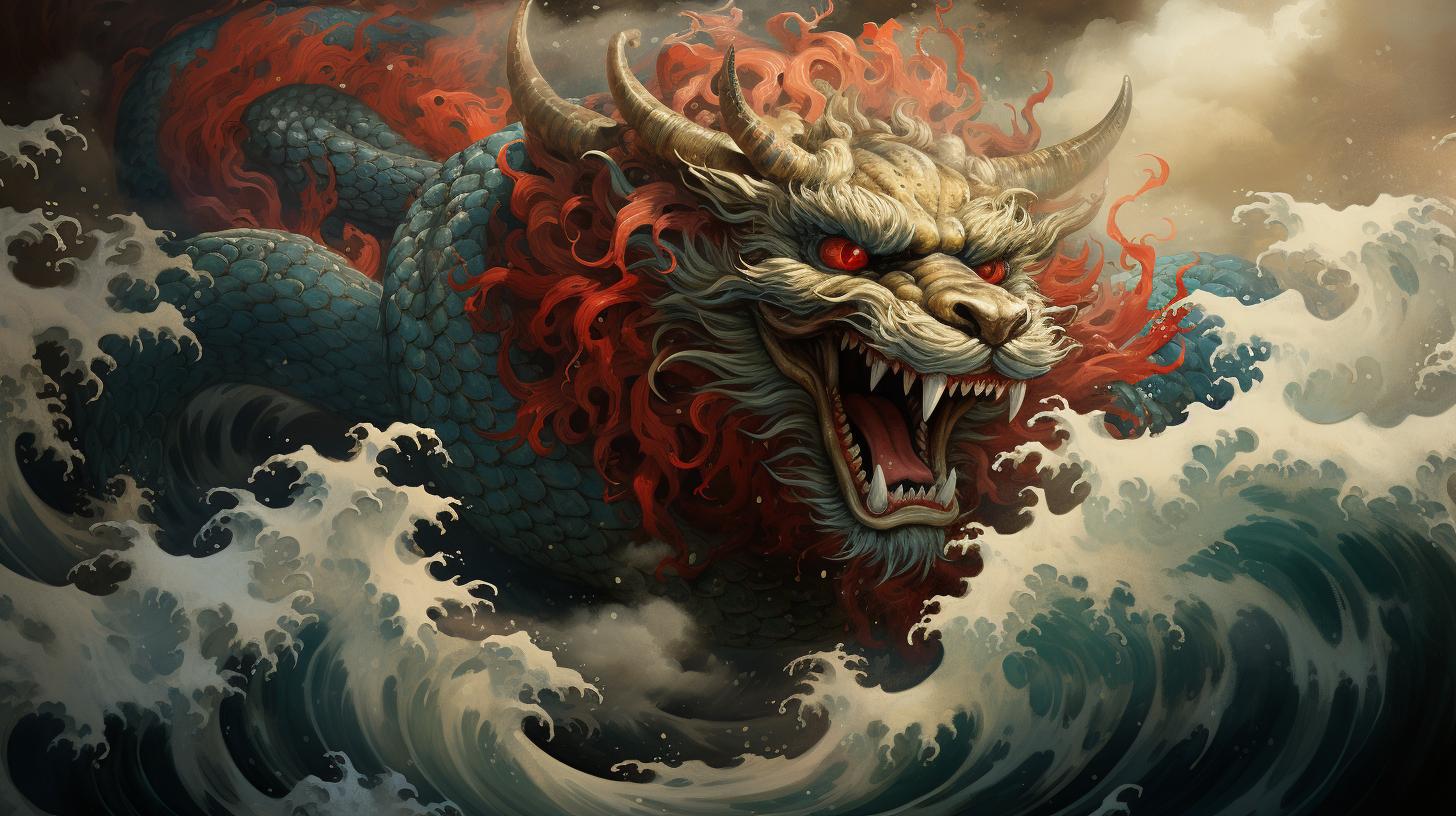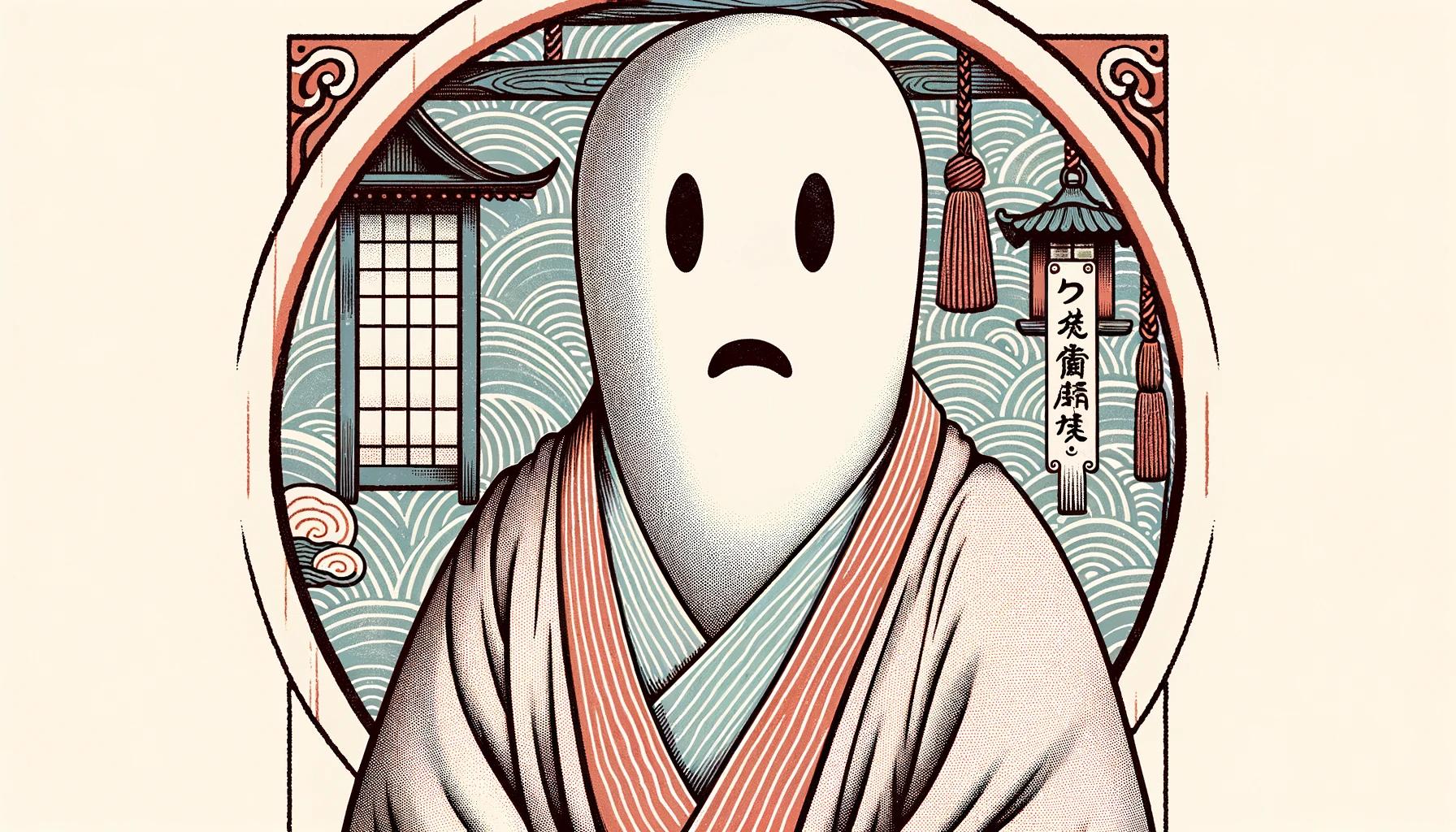Mikaboshi: Exploring the Enigma of Japanese God Mythology
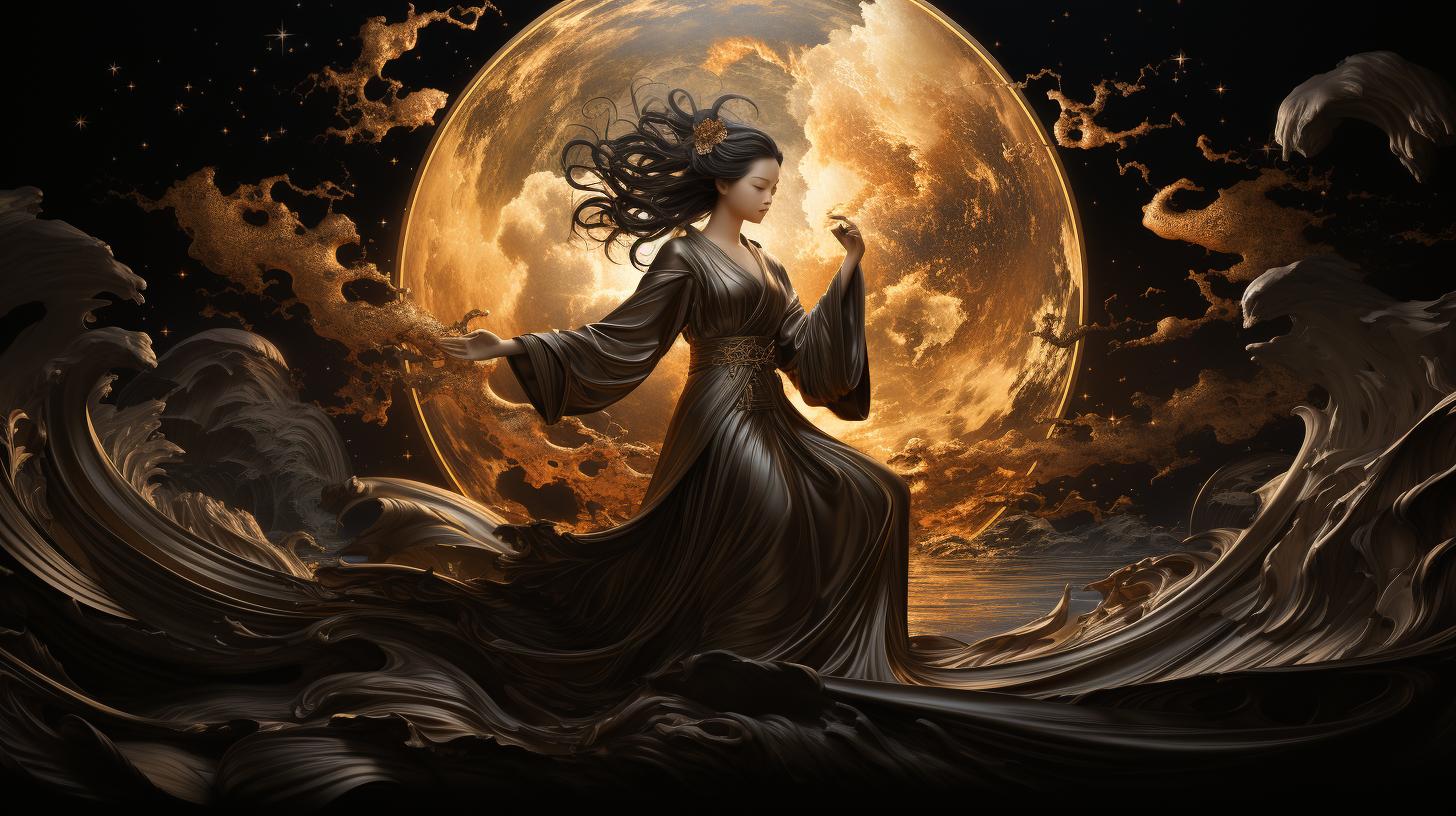
In Japanese mythology, Mikaboshi is an enigmatic deity associated with intense emotions and imbalance in the world. Alongside Izanami and Izanagi, the creator deities, Mikaboshi represents a primordial force that disrupts harmony.
Izanami’s tragic death and Izanagi’s journey to the underworld play significant roles in this mythological narrative. The separation between the realms of the living and the dead is a result of Izanagi’s actions during his escape from Izanami’s wrath.
Mikaboshi’s connection to Yomi, the realm of the dead, further adds to the intrigue. This article explores the fascinating aspects of Mikaboshi, shedding light on this captivating figure in Japanese god mythology.
Izanami and Izanagi: The Creator Deities
In the rich tapestry of Japanese mythology, Izanami and Izanagi hold a significant place as the creator deities. They are revered as the divine couple who brought forth the archipelago of Japan and gave birth to a multitude of gods and goddesses, shaping the very fabric of the mythological world.
According to legend, Izanami and Izanagi joined forces to construct a magnificent palace. As a symbolic act of unity, they encircled a sacred pillar, which represented the axis of creation.
With their sacred union, they embarked on the noble task of birthing divine beings who would govern various aspects of the world.
However, their first attempt at procreation resulted in a sorrowful outcome.
The children born from this union were deformed and deemed unfit to populate the realm. Distraught by this turn of events, Izanami and Izanagi realized the importance of performing the correct rituals before engaging in further creation.
Seeking guidance from other deities, the divine siblings embarked on a second endeavor. This time, their efforts were blessed, and they successfully gave birth to numerous gods and goddesses who would shape the realms of the living and the divine.
Among their notable offspring are Amaterasu, the radiant sun goddess, Tsukuyomi, the moon god, and Susanoo, the tempestuous god of storms.
As the deities of creation, Izanami and Izanagi played a pivotal role in shaping the cosmos of Japanese mythology.
Their union and subsequent struggles symbolize the delicate balance between life and death, achievement and failure, and the eternal cycle of creation and destruction that underpins the divine tapestry of Mikaboshi Japanese god mythology.
The Birth of the Japanese Archipelago
According to Japanese mythology, Izanami and Izanagi, the creator deities, played a significant role in the birth of the Japanese archipelago. They are revered as the divine beings who sculpted the beautiful land that we now know as Japan.
Legend has it that Izanami and Izanagi stood upon the “Floating Bridge of Heaven” and used a jeweled spear to stir the primordial ocean below.
As they withdrew the spear, water droplets fell from it, creating the first island, Onogoro.
Intrigued by what they had accomplished, Izanami and Izanagi wanted to foreshadow their future ventures. So, they decided to build a heavenly pillar upon the island. By erecting this column, they intended to create stability and establish a sacred bond between the heavens and the earth.
After completing this task, they descended from the bridge to the newly formed island and performed a ceremony to solidify their marriage. They used the pillar as a central point for their union, going around it in a circle.
However, their harmonious intentions were soon marred by tragedy.
Despite their efforts, their first attempt at creating offspring resulted in the birth of deformed children, who were cast into the vast ocean.
This unfortunate event left Izanami and Izanagi disheartened, and they sought counsel from other gods to rectify their mistake. Encouraged by the divine advice, they decided to give it another try.
The second attempt proved to be fruitful, as they gave birth to a new generation of deities, who would shape the future of Japan. However, this joyous occasion was overshadowed by a great tragedy.
Izanami, while giving birth to the fearsome god of fire, met her demise. This incident marked a turning point in their mythological journey, as Izanagi decided to embark on a desperate quest to reunite with his beloved partner.
Progenitors of Deities: Amaterasu, Tsukuyomi, and Susanoo
In the rich tapestry of Japanese mythology, Amaterasu, Tsukuyomi, and Susanoo hold significant roles as deities born from the divine union of Izanami and Izanagi. Each of these progenitors embodies unique characteristics and commands various aspects of the natural world.
Amaterasu
Amaterasu, also known as Amaterasu-ōmikami, is the goddess of the sun and the ruler of Takamagahara, the heavenly realm. She radiates warmth and light, symbolizing life, abundance, and purity. Amaterasu’s divine presence brings light to the world and nourishes all living beings.
She is often revered as a compassionate and benevolent deity.
Tsukuyomi
Tsukuyomi, the god of the moon, possesses a serene and tranquil presence. As the sibling of Amaterasu, Tsukuyomi represents the complementary energy of darkness and introspection. Tsukuyomi’s influence shapes the ebb and flow of the night, casting a gentle glow upon the world.
In Japanese folklore, Tsukuyomi’s moonlit beauty and mystique captivate the imagination.
Susanoo
Susanoo, the storm god, embodies untamed strength and raw power. His fiery and sometimes tempestuous nature complements the harmony of his siblings, Amaterasu and Tsukuyomi. Often depicted as a warrior, Susanoo fiercely protects the natural balance while unleashing storms and destructive forces to prevail over his adversaries.
His adventurous spirit and courageous deeds make him an essential component of Japanese mythological tales.
The divine trio of Amaterasu, Tsukuyomi, and Susanoo collectively epitomizes the unity and diversity within the Japanese pantheon.
Each deity influences different aspects of the world, shaping the celestial bodies, day and night, and the force of nature itself.
The Tragic Death of Izanami
In Japanese mythology, the story of Izanami and Izanagi takes a tragic turn with the death of Izanami during childbirth. As the mother goddess, Izanami’s life-giving powers came to an abrupt end as she brought forth the god of fire.
The sorrow of losing his beloved wife and the pain of her passing engulfed Izanagi.
Heartbroken, Izanagi embarked on a journey to the underworld, Yomi, in a desperate attempt to retrieve Izanami. However, upon finding her, he discovered that she had already partaken of the food of the dead, which forever bound her to the realm of the departed.
In this bleak and desolate place, Izanami had become a resident of Yomi, the land of shadows and silence.
Izanagi’s deep anguish and sorrow turned to anguish as he realized the impossibility of their reunion.
His longing for Izanami clashed with the harsh reality of her eternal separation from the world of the living. In a poignant moment of acceptance and grief, Izanagi made the painful decision to leave her behind and return to the realm of the living.
As Izanagi fled from Yomi, he placed a huge rock at the entrance, marking the division between the world of the living and the realm of the dead. This act created a clear separation between the two realms, ensuring the preservation of life from the clutches of death.
The tragic death of Izanami symbolizes the fragility of life and the sorrow that accompanies the inevitable separation from loved ones. It serves as a reminder of the cyclical nature of existence, where creation and destruction are intertwined, and where even the gods themselves must face the immutable forces of life and death.
Izanagi’s Journey to the Underworld
After the tragic death of Izanami, Izanagi, filled with grief and longing, embarked on a heart-wrenching journey to the underworld in search of his beloved. Determined to restore Izanami to the world of the living, Izanagi braved the treacherous path that led to Yomi, the realm of the dead.
As he ventured deeper into the dark abyss, Izanagi encountered a desolate land, shrouded in melancholy. The air hung heavy with sorrow, and the echoes of lost souls resonated through the cold silence.
Undeterred by the eerie surroundings, Izanagi pressed on with unwavering determination.
Reaching the heart of Yomi, Izanagi discovered Izanami, but something had changed. Her once radiant beauty had withered, and an otherworldly aura enveloped her being.
Consumed by anguish and bitterness, Izanami had become a harbinger of death and decay.
A somber conversation unfolded between Izanagi and Izanami, their words reverberating with the weight of their shared tragedy.
Izanagi pleaded for Izanami’s return, to restore the balance that their union had once symbolized. But Izanami, ensnared in the grips of the underworld, could not defy its inexorable hold.
Izanagi’s desperation turned to dismay as he realized the irreversible changes that had befallen his beloved. With a heavy heart, he made the painful decision to leave Izanami behind, bidding her a sorrowful farewell.
As he retreated from Yomi, Izanagi placed a massive rock at the entrance, forever sealing the divide between the realms of the living and the dead.
The journey back to the realm of the living was arduous for Izanagi. The weight of his loss bore heavily upon him, imprinting scars upon his soul.
Yet, he emerged from the underworld, forever changed by his encounter with death.
Thus ended Izanagi’s harrowing journey to the underworld in search of his departed love. The anguish of his experience would shape the mythos of Mikaboshi, forever intertwining their stories in the tapestry of Japanese god mythology.
The Wrath of Izanami and the Separation of the Worlds
After Izanami’s tragic death while giving birth to the fire deity, Izanagi was consumed by grief and sought to reunite with her in the realm of the dead. Determined to bring her back, he embarked on a perilous journey to Yomi, the underworld, to find his beloved wife.
Izanagi ventured deep into the dark and desolate underworld, encountering various supernatural entities along the way. However, upon finding Izanami, he was filled with horror at the sight of her decaying form.
Realizing the irreversible transformation she had undergone in the realm of the dead, Izanagi couldn’t help but feel an overwhelming sense of dread.
Fearful and desperate to escape, Izanagi broke the promise he had made to Izanami and fled from her wrath.
As he raced back to the world of the living, he placed a massive rock at the entrance to Yomi, creating a permanent separation between the realm of the living and the world of the dead.
This act of separation resulted in the birth of various fundamental concepts in Japanese mythology. The physical barrier became a symbolic representation of the divide between life and death, light and darkness, and order and chaos.
The world of the living and the world of the dead were forever kept apart, ensuring that the balance and harmony of existence could be maintained.
Thus, Izanami’s wrath and Izanagi’s escape marked a significant turning point in Japanese mythology.
It not only solidified the existence of Yomi as a distinct realm but also established the fundamental belief in the separation of the realms and the importance of maintaining balance between them.
Mikaboshi: The Enigmatic Japanese God
Mikaboshi is a fascinating figure in Japanese mythology, often described as an enigma wrapped in mystery. As a nebulous and primordial deity, Mikaboshi defies clear categorization and conventional understanding. Unlike other prominent gods and goddesses, Mikaboshi does not possess a defined role or physical form.
Instead, Mikaboshi is associated with intense energies and imbalances that disrupt harmony in the world. Its essence can be perceived in emotions like anger, envy, and unhealthy obsessions. Considered the Master of Emotions and Imbalance in Buddhist perspective, Mikaboshi embodies the darker aspects of human nature.
Although sometimes labeled as the “god of evil,” Mikaboshi is better characterized as a bitter and dispossessed presence. Its influence is not relevant to the average person’s daily life, but its impact can be felt in moments of emotional turmoil and turmoil on a larger scale.
In the rich tapestry of Japanese mythology, Mikaboshi’s connection to Yomi, the realm of the dead in Shintoism, adds another layer of intrigue. Some theories suggest a deep relationship between Mikaboshi and Yomi, where the god’s disruptive energy finds resonance.
Mikaboshi’s role in popular culture has varied, with appearances in literature, manga, and video games. Its enigmatic nature and association with darkness make it an intriguing subject for artistic and narrative exploration.
Overall, Mikaboshi’s character and influence in Japanese god mythology remain shrouded in mystery. As we delve deeper into the realm of myth and legend, we can only scratch the surface of understanding this captivating and enigmatic deity.
Amatsu-Mikaboshi: The Master of Emotions and Imbalance
In the realm of Japanese mythology, Amatsu-Mikaboshi holds a unique and enigmatic position. Referred to as the “Master of Emotions and Imbalance,” this nebulous figure is associated with intense energies and excessive emotions that can disrupt harmony in the world.
While some may label Amatsu-Mikaboshi as the “god of evil,” it is more accurate to describe them as a bitter and dispossessed presence.
Amatsu-Mikaboshi lacks a clear role or a defined physical form, making them largely irrelevant to the average person.
However, their essence can be perceived through emotions such as anger, envy, and unhealthy obsessions. In Buddhist perspectives, Amatsu-Mikaboshi is regarded as the “Maestro of Pecadores,” reflecting their association with sinners and spiritual imbalance.
Although Amatsu-Mikaboshi’s direct connection to Mikaboshi remains a subject of debate among scholars, there are theories suggesting a relationship with Yomi, the realm of the dead in Shintoism. This connection implies an influence over the forces and energies that govern the afterlife, adding to the mysterious aura surrounding Amatsu-Mikaboshi’s dominion.
Amatsu-Mikaboshi serves as a cautionary symbol, reminding us of the potential destruction that excessive emotions and imbalances can bring. Their presence is a reminder of the delicate balance that must be maintained for the well-being of individuals and society as a whole.
Exploring the Connection Between Mikaboshi and Yomi
In Japanese mythology, there is an intriguing association between Mikaboshi, the enigmatic Japanese god, and Yomi, the realm of the dead in Shinto beliefs. While Mikaboshi is not explicitly identified as a deity of the underworld, some scholars suggest a potential link between these two entities.
Yomi, often described as a gloomy and desolate place, serves as the destination for souls after death in Japanese folklore. It is ruled by the god Izanami, who was tragically claimed by death while giving birth to the fire god.
In her sorrow and indignation, Izanami became the queen of Yomi. This tragic event shook the realm of the divine and created a profound connection to Mikaboshi.
Mikaboshi, often referred to as the master of emotions and imbalance, embodies intense and destructive energies that disrupt the natural harmony of the world.
These emotions include anger, envy, and unhealthy obsessions. It is believed that Mikaboshi’s essence permeates through Yomi, amplifying the gloom and despair of the underworld.
While the exact nature of Mikaboshi’s relationship with Yomi remains a subject of interpretation and debate, it is clear that their connection represents a profound aspect of Japanese mythology.
Some speculate that Mikaboshi’s presence intensifies the negative emotions within Yomi, contributing to its somber atmosphere and reinforcing its association with darkness and despair.
It is worth noting that Mikaboshi’s nebulous and amorphous nature aligns with the unfathomable depths of Yomi. Both entities defy clear definition and exist beyond the understanding of the average person.
They embody the mysterious and enigmatic essence present in the beliefs and tales of ancient Japan.
Exploring the connection between Mikaboshi and Yomi provides a deeper understanding of the intricate web of Japanese mythological narratives.
It reveals the complex interplay of emotions, realms, and divine forces that shape the cultural and spiritual landscape of Japan. By delving into these connections, we gain insight into the rich tapestry of beliefs and stories that have captivated generations throughout history.
In Popular Culture
The enigmatic figure of Mikaboshi from Japanese god mythology has made its way into popular culture, captivating audiences around the world. Its portrayal in various forms of media has showcased the depth and allure of this ancient deity.
Here are some instances where Mikaboshi has been depicted and referenced:
- Literature: Several novels, both in Japan and internationally, have incorporated Mikaboshi into their stories. Authors have taken inspiration from its role as the master of emotions and imbalance, exploring themes of conflict and inner turmoil.
- Comics and Manga: Mikaboshi has appeared as a character in numerous graphic novels and manga series.
Often portrayed as a formidable force, it embodies chaos and serves as a challenging antagonist for the protagonists to overcome.
- Video Games: Gaming enthusiasts have encountered Mikaboshi in various video game franchises.
From action-packed adventures to intricate role-playing games, this deity’s influence is prominent, reflecting its association with intense emotions and disruption.
- Artistic Representations: Visual artists have found inspiration in the enigmatic nature of Mikaboshi and have depicted it in stunning artworks.
Paintings, illustrations, and sculptures often focus on capturing the essence of its intense energy and untamed emotions.
- Music and Songs: Mikaboshi’s essence has even permeated the realm of music. Some musicians have drawn inspiration from its role as the master of imbalance, creating compositions that reflect themes of inner turmoil and emotional conflicts.
Through its portrayal in various forms of popular culture, Mikaboshi continues to fascinate and captivate audiences.
Its primal energy and association with intense emotions make it a compelling character, adding depth and intrigue to storytelling across different mediums.
Related Deities and Mythological Figures
In Japanese mythology, Mikaboshi is not the only deity and mythological figure that holds significance. The rich tapestry of Japanese folklore introduces us to a wide array of fascinating beings that enhance our understanding of the divine realm.
One prominent figure is Amaterasu, the goddess of the sun and the ruler of Takamagahara, the heavenly realm in Japanese mythology. She is revered as one of the most important deities in the Shinto pantheon and is often associated with purity, light, and fertility.
Another sibling of Mikaboshi is Tsukuyomi, the god of the moon. Tsukuyomi is depicted as a calm and introspective deity, often associated with beauty, poetry, and the passage of time.
Together with Amaterasu, they represent the celestial balance between the sun and moon.
Susanoo, the chaotic and unpredictable brother of Amaterasu and Tsukuyomi, represents storms, sea, and other turbulent forces of nature.
He is known for his impulsive nature and his clash with Amaterasu, which resulted in her hiding in a cave and bringing darkness to the world.
Aside from these sibling deities, Japanese mythology also includes various kami, spirits or deities that dwell in natural elements such as mountains, rivers, and trees.
They are believed to possess divine power and influence over specific aspects of the natural world.
One notable kami is Inari, the god of rice, fertility, and agriculture. Inari is often depicted as a fox and symbolizes abundance and prosperity.
Many people still worship Inari today, seeking blessings for their agricultural endeavors and business ventures.
Many other mythical creatures and figures also populate the realm of Japanese mythology. Yokai, supernatural monsters or spirits, play a significant role in folklore.
They can take the form of animals, humans, or even inanimate objects and often possess diverse powers and abilities.
The Tengu, for instance, are legendary bird-like creatures known for their martial arts prowess and association with mountains and forests.
These winged beings are often depicted as both mischievous tricksters and wise spiritual guides.
Throughout history, Japanese mythology has also been influenced by outside cultures. A notable example is the introduction of Buddhism, which brought with it a plethora of new deities and figures.
The blending of Buddhist and Shinto beliefs resulted in the creation of hybrid deities and unique interpretations of existing ones.
In conclusion, the realm of Japanese mythology is a vast and captivating tapestry filled with a diverse array of deities, spirits, and mythical creatures.
Exploring the related figures and their significance expands our understanding of the intricate web of beliefs that have shaped Japanese culture throughout the centuries.











